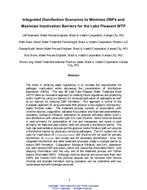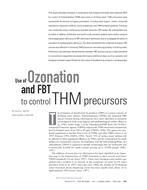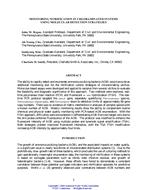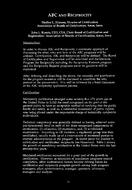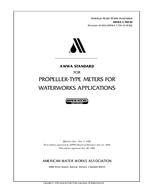Provide PDF Format
AWWA WQTC60746
- Integrated Disinfection Scenarios to Minimize DBPs and Maximize Inactivation Barriers for the Lake Pleasant WTP
- Conference Proceeding by American Water Works Association, 11/15/2004
- Publisher: AWWA
$12.00$24.00
The trend in drinking water regulations is to increase the requirements forpathogen inactivation while decreasing the concentration of disinfectionbyproducts (DBPs). The new 80 mgd Lake Pleasant Water Treatment Plant(WTP) takes an innovative approach to meeting future regulations and protectingpublic health by using six barriers for removal/inactivation of pathogens as wellas six barriers for reducing DBP formation. This approach is similar to theEuropean approach of using processes that produce a low-organics, biologically stablefinished water. The treatment process consists of preoxidation withchlorine dioxide, coagulation, ballasted flocculation and high-rate sedimentation,ozonation, biological filtration, adsorption on granular activated carbon (GAC),and disinfection with ultraviolet light (UV) and chlorine. While chlorine dioxideis used primarily for preoxidation of iron and manganese, and ozone is usedprimarily for taste-and-odor control, both will provide a disinfection barrier. Thehigh rate sedimentation process and the granular media filtration both will providea disinfection barrier by physically removing pathogens. The UV system will beused for inactivation of Cryptosporidium and chlorine will be used for primarydisinfection of Giardia and viruses and for secondary disinfection. Also, theintegrated disinfection and other treatment processes create a multiple barrier toreduce DBP formation. Coagulation, biological filtration, and GAC adsorptionwill each remove DBP precursors, which will reduce the chlorinated DBPs. Anddelaying chlorination until the very end of the treatment process will furtherreduce chlorinated DBPs. Although chlorine dioxide and ozone have their ownDBPs, the chlorite from the chlorine dioxide will be removed with ferrouschloride and bromate formation during ozonation will be controlled with lowozone doses and with hydrogen peroxide. Includes reference, table, figure.
Related Products
AWWA WQTC60567
Monitoring Nitrification in Chloraminated Systems Using Molecular Detection Strategies..
$12.00 $24.00

